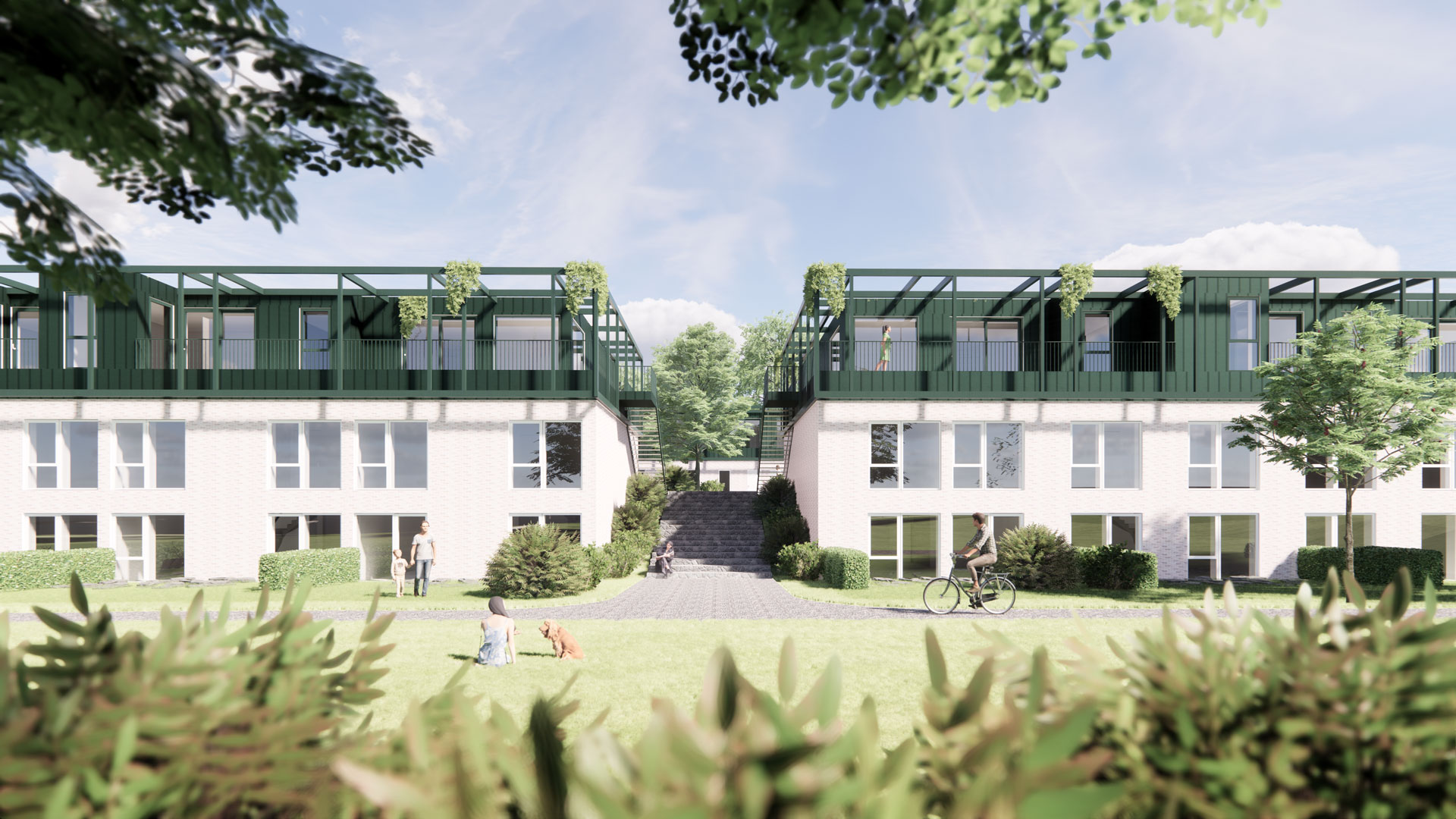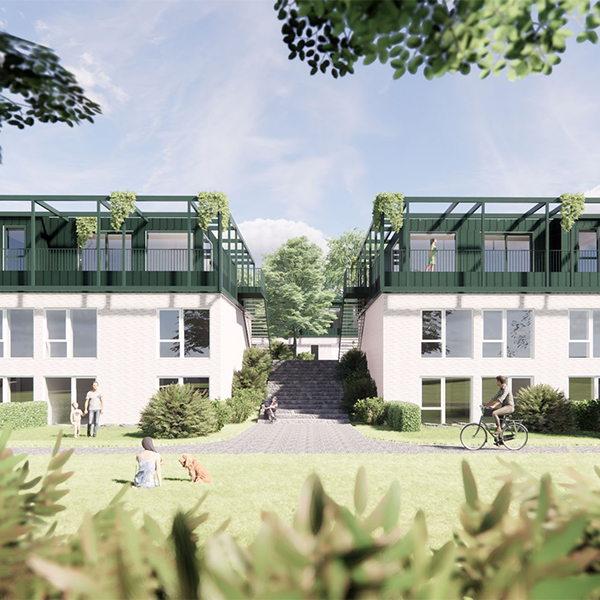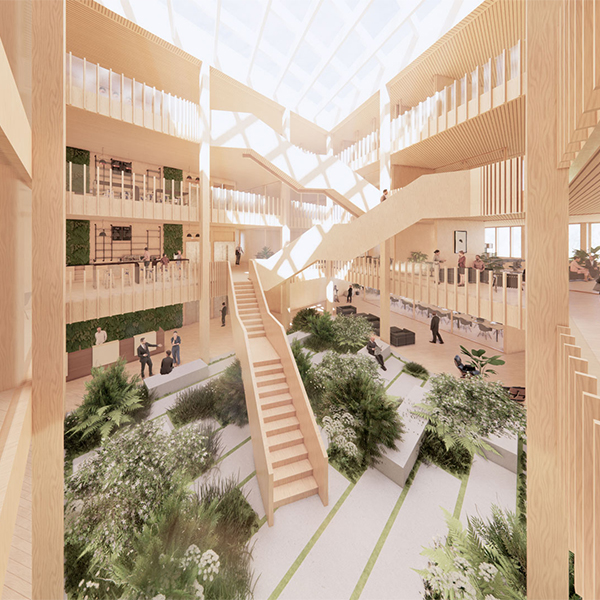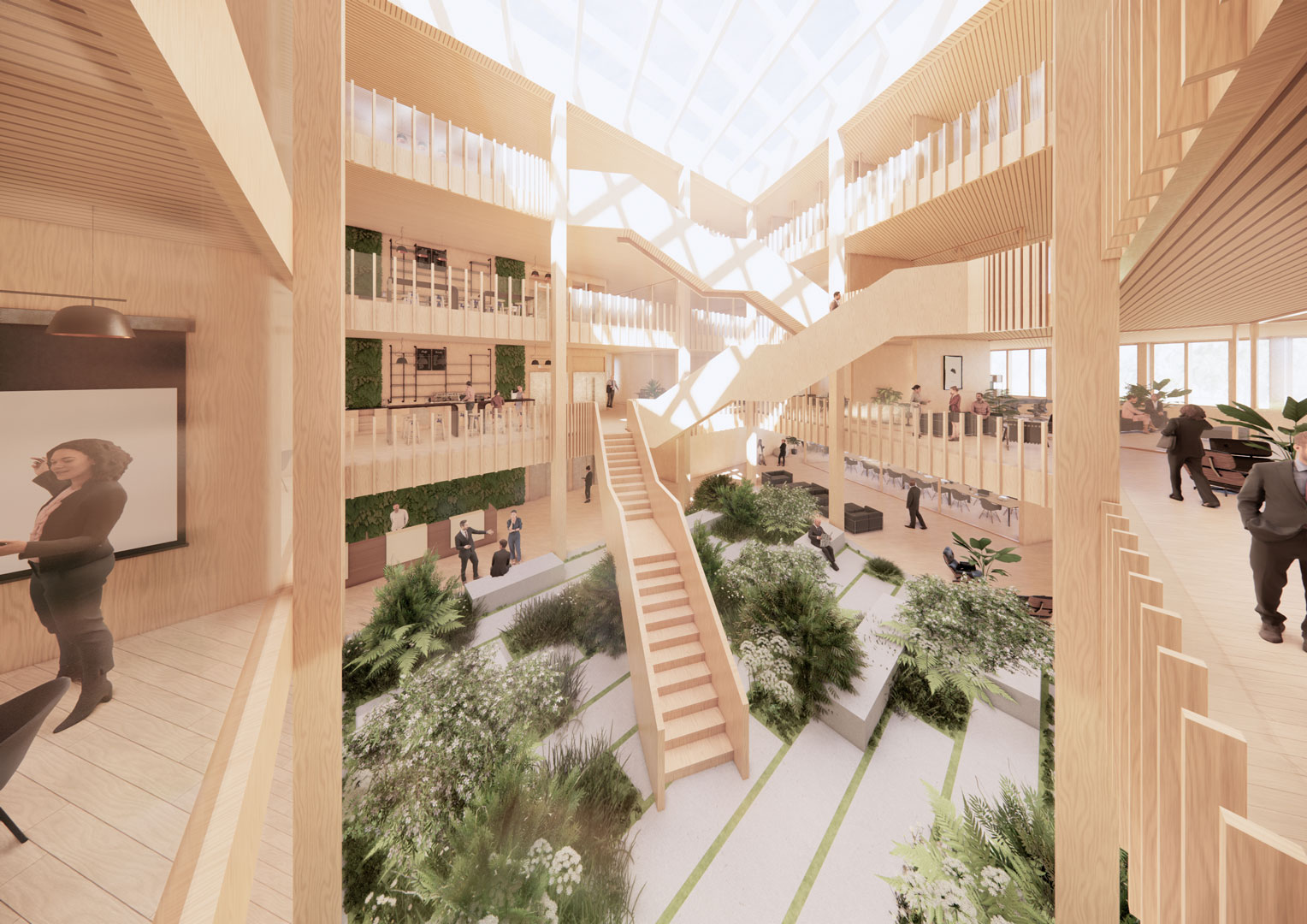
Veum Hageby
250 Housing
Fredrikstad
Surface: 17 000 m2
Status: Ongoing
This garden city inspired neighbourhood project on the outskirts of Fredrikstad focuses on quality of life, community and nature. The project has been drawn in collaboration with Studio Sted and Ghilardi+Hellsten Arkitekter. It features many building typologies, gathered around common courtyards and surrounded by public parks. This layout promotes social interaction and social diversity to create a sense of community and improve neighbour interactions. In order to achieve a significant degree of self-sufficiency, some of the buildings house shops and small businesses, public gardens and allotments offer the opportunity to grow vegetables, and the parks have playgrounds and outdoor sports facilities. In this way, neighbourhood life is very self-sustaining and promotes the local economy for a sustainable lifestyle.
The building typologies in the project vary from terraced houses to denser flats, as well as the rehabilitation and conservation of existing buildings. The preservation of existing buildings is both a decarbonized way of reducing building costs, but also of maintaining the identity of the site and reactivating buildings otherwise obsequious with only minor interventions.



